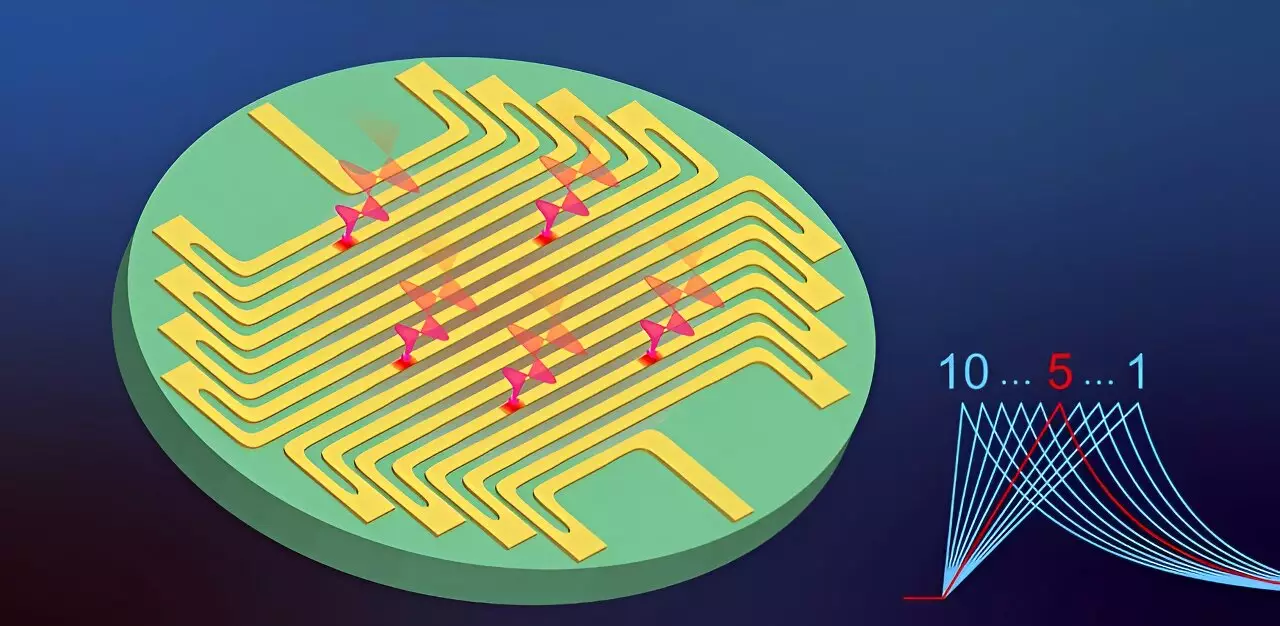Quantum information technology heavily relies on the use of single photons as qubits. Accurately determining the number of photons is crucial in various quantum systems such as quantum computation, quantum communication, and quantum metrology. The development of photon-number-resolving detectors (PNRDs) has been a key focus in achieving this accuracy. PNRDs have two main performance indicators: resolving fidelity and dynamic range. However, despite the advancements in superconducting nanostrip single-photon detectors (SNSPDs), there has been a struggle to find a balance between these two factors.
SNSPDs are considered the leading technology for single-photon detection due to their near-perfect efficiency and high-speed performance. However, when it comes to photon-number resolution, SNSPD-based PNRDs face challenges in maintaining both fidelity and dynamic range. Existing array-style SNSPDs, which divide incident photons among a limited number of pixels, often encounter fidelity constraints, earning them the label of quasi-PNRDs.
Insights from Shanghai Institute of Microsystem and Information Technology
Researchers from the Shanghai Institute of Microsystem and Information Technology (SIMIT), Chinese Academy of Sciences, have recently made notable progress in enhancing the photon-number-resolving capability of SNSPDs. They discovered that by increasing the strip width or total inductance, bandwidth limitations and timing jitter in readout electronics could be overcome. Consequently, this led to stretched rising edges and improved signal-to-noise ratio in the response pulses, resulting in enhanced readout fidelity.
The Breakthrough: Superconducting Microstrip Single-Photon Detector
Through widening the superconducting strip to a micrometer scale, the researchers introduced the superconducting microstrip single-photon detector (SMSPD), which achieved true-photon-number resolution up to 10 without the use of cryogenic amplifiers. This breakthrough observation demonstrated the potential of SMSPDs in surpassing the limitations of conventional SNSPDs.
Impressive Readout Fidelity and Real-Time Photon-Number Readout
The readout fidelity of the SMSPD reached an impressive 98 percent for 4-photon events and 90 percent for 6-photon events. Additionally, the researchers proposed a dual-channel timing setup to enable real-time photon-number readout. This setup not only significantly reduced data acquisition requirements but also simplified the readout process.
Application in Quantum Information Technology
The utility of the SMSPD technology in quantum information technology was demonstrated through the creation of a quantum random-number generator based on sampling the parity of a coherent state. This application ensures unbiasedness, robustness against experimental imperfections and environmental noise, and resistance to eavesdropping. These findings clearly showcase the potential of SMSPDs in advancing the field of PNRDs and their capability for high-fidelity and large-dynamic-range photon-number resolution.
With further improvements in the detection efficiency of SMSPDs, this technology has the potential to become readily accessible for various optical quantum information applications. The breakthrough achieved by the researchers at SIMIT highlights the progress made in the field of PNRDs and opens up new avenues for achieving high levels of accuracy and resolution in quantum information systems.
The breakthroughs in enhancing the fidelity and dynamic range of photon-number-resolving detectors have paved the way for advancements in quantum information technology. The research conducted at the Shanghai Institute of Microsystem and Information Technology showcases the potential of superconducting microstrip single-photon detectors in achieving high-fidelity and large-dynamic-range photon-number resolution. With further developments in this field, the future of quantum information technology looks promising.



Leave a Reply